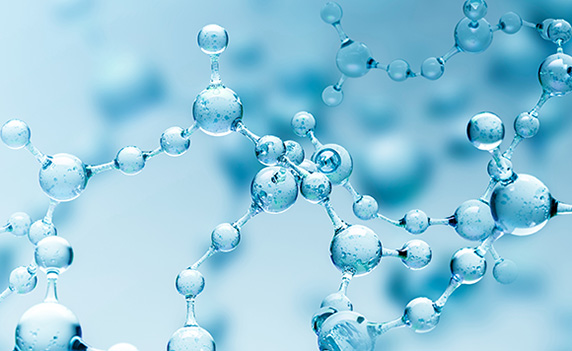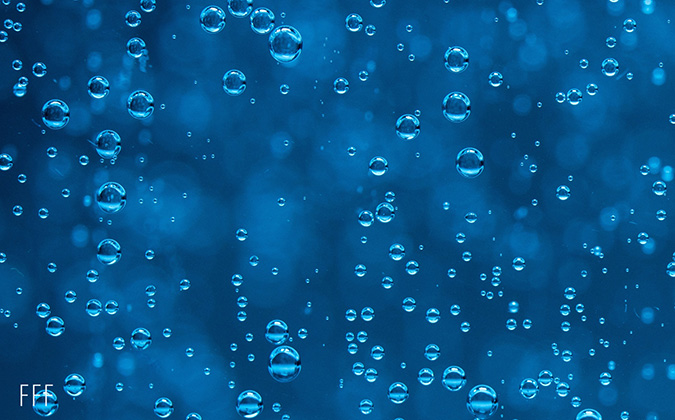
Making sure salmon smolt raised in RAS are equipped for sea transfer
Recirculating aquaculture systems (RAS) are on the rise worldwide, and one of their most common applications is in rearing Atlantic salmon smolts before transfer to sea.
While this is an efficient method of controlling the freshwater phase of salmon and producing out-of-season smolts, questions remain about the impact of such closed and highly controlled systems on the robustness of salmon for open-sea transfer.
The Robustsmolt project, led by Herve Migaud — a professor at University of Stirling’s Institute of Aquaculture and president of the European Aquaculture Society — aims to get to the bottom of this.
“A lot of research has tried to understand how the environment in RAS, which is different in many ways from ambient conditions, is impacting on the future performance, health and robustness of the smolts. There is anecdotal evidence that smolts coming out of land-based systems are not performing as well as their siblings from loch-based systems once transferred to sea,” Migaud explained.
Opportunity in Scotland’s mixed-production approaches
Scotland provides a setting “quite unique in the world,” he continued, due to its mix of land-based RAS, flow-through hatcheries and freshwater lochs.
“We have a direct comparison to benchmark smolt performance, and it’s very different than what’s done elsewhere, as most if not all smolts in other salmon-producing countries are produced on land. They don’t really use open freshwater cages,” he explained.
The project, in collaboration with colleagues from Aberdeen, Edinburgh and Exeter Universities, is looking at a number of variables, including microbiota, water chemistry, diet, photoperiod and vaccine use, as well as analyzing the genetic profiles of fish with respect to key performance traits.
Making sense of contrasting microbiomes
Regardless of whether smolts are produced using RAS or in lochs, they face a complete change of microbiome when moved to the sea, Migaud explained.
The microbiome-focused part of the research is led by the University of Aberdeen and involves using sequencing to analyze bacteria found in the water, feed and fish on production sites. Many pathogens found in such highly controlled systems are non-virulent, he explained — but it is believed that exposure to system-specific microbiota would shape the immune system of the growing fish.
“One of the main factors that is impacting the microbiota in the water and the gut microbiome of the fish is the feed. Once the fish grow, the organic load in the water increases due to more feed and feces, and then you get more potential diversity between different RAS units. We’re comparing this to the loch system,” Migaud said.
“The idea [of the research] is to try to map out the microbiome of the mucosal layers of the fish in relation to the microbiota in the water and to the feed that they’re ingesting. We’re interested in comparing the temporal and system changes found in RAS versus loch, then looking at the host immune system post sea-water transfer.”
The use of disinfection and vaccination in RAS and loch systems is also important, he explained. RAS fish are kept at a consistently higher temperature, meaning they reach their necessary degree days for protection against pathogens more quickly than fish reared in lochs, where the ambient temperature shows strong seasonal changes.
Conditions great for growth — but at what cost?
One of Migaud’s areas of personal interest is in chronobiology or the study of biological rhythms. Another aim of the project is to tease out the possible impacts of continuous, controlled conditions on smolt robustness.
“When you put fish on continuous feeding, continuous light and continuous high temperature, they grow very well and their metabolism is kept high. But the concept that we’re looking at overall is that big doesn’t necessarily mean strong. The lack of daily entrainment — or the synchronizing of biological and environmental rhythms — may impact their robustness later during the production cycle,” he said.
“It’s not so easy to detect the impact this is having on fish; it can be subtle but possibly with long-lasting effects. That’s the reason we are interested to see if this lack of circadian entrainment is making the fish weaker in any way. Is it reducing their ability to properly develop their immune system and also their ability to cope with stressors? If so, when they are transferred to open-sea cages, maybe they will struggle to adapt to the radical change in the environment and the many health threats.”
The interaction of light, feed and temperature is being tested by Migaud’s team as part of several ongoing PhD projects. Following salmon populations in freshwater and seawater, they are investigating the underlying genetic effects of this lack of daily rhythmicity from an early developmental stage. The outcomes of the research could be significant for smolt production as well as harvest-size salmon produced in RAS.
“Constant environmental conditions are convenient in land-based systems. But it does not necessarily have to be this way. There is scientific evidence against continuous light from terrestrial livestock and humans, for example; periods of darkness can have beneficial effects.
“In the same way, fish do not need to be kept under a continuous temperature; some level of rhythmicity may be better. Regimes can be adapted without impacting much on productivity, but we need the scientific evidence. We’re still missing that, which is why projects such as Robustsmolt are important,” he noted.
Effectively managing water data
The work is also looking at the impact of water chemistry. Smoltification is a complex osmoregulatory process, so different levels of minerals in the water such as calcium, magnesium and potassium have an impact on fish development, as do alkalinity, pH and water CO2 levels.
A major part of the research is simply trying to make sense of what can potentially be a massive amount of data collected from RAS, particularly on water quality.
“We’re trying to move towards precision farming, but at the moment, there’s a lot of variability between sites. So, we’re gathering a lot of information and looking for trends to inform us, so that we can then run controlled trials to study key variables within relevant ranges observed in commercial systems,” Migaud said.
“Running large RAS is not a simple matter and things can go wrong quickly. When should we be worried or when shouldn’t we be? More research is needed to establish ‘sweet spots’ for each variable in isolation but also in interaction between them. Mitigations are also needed when it deviates from cutoffs. Only when this knowledge becomes available can the use of sensing technologies be truly used as a warning system.”
RAS is bringing a lot of positive changes to the aquaculture sector, Migaud concluded, but technology is moving faster than the scientific knowledge on the fish physiology in these systems. There is an urgent need for closing the gap through science, training and dissemination of knowledge, he added.
Posted on: June 24, 2021






